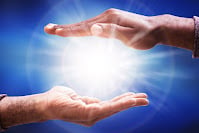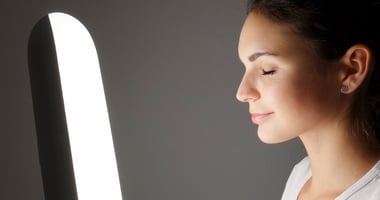Light therapy has been shown to be an effective treatment for bipolar depression, but there have...
Bright Light Therapy May Boost Odds of Remission of Nonseasonal Depression

Participants who received add-on bright light therapy for nonseasonal depression, either unipolar or bipolar, were more likely to respond and reach remission than those who did not receive it, according to a systematic review and meta-analysis issued by JAMA Psychiatry.
“Bright light therapy has been studied as a potential adjunctive treatment for major depressive disorder, as light exposure is well understood to affect human mood and cognitive function,” wrote Artur Menegaz de Almeida, M.S., of the Federal University of Mato Grosso in Sinop, Brazil, and colleagues. However, they noted the efficacy of bright light therapy is only established for seasonal depression.
Menegaz de Almeida and colleagues combined data from 11 randomized trials involving 858 participants who had nonseasonal major depressive disorder or bipolar depression and used bright light therapy as adjunctive treatment to their medication. Bright light therapy was defined as using a fluorescent light box that produces white light for at least 30 minutes, with the commonly used range of 10,000 lux; the treatment length ranged from one to six weeks. All studies compared outcomes to a control group who received either an air ionizer or dim red light. Studies were published between 2000 and March 25, 2024.
In total, 60.4% of participants receiving bright light therapy responded to treatment (typically defined as a 50% or greater reduction in depressive symptoms), compared with just 38.6% of those in the control groups. Participants treated with bright light therapy also had a significantly higher remission rate than the control group (40.7% versus 23.5%, respectively). Menegaz de Almeida and colleagues also found that bright light therapy increased the likelihood that individuals could achieve a response or remission within four weeks or less.
“The primary supportive argument in favor of using bright light as an adjunctive treatment is the cost,” the authors wrote. “Even though outpatient treatment costs with antidepressants are widely variable, exposure to external light generally involves no costs or limitations, which reinforces the need to firm [bright light therapy] as an efficient adjunctive treatment for nonseasonal depressive disorders.”
For related information, see the Psychiatric Research and Clinical Practice article "Commercially Available Phototherapy Devices for Treatment of Depression: Physical Characteristics of Emitted Light."
(Image: Getty Images/iStock/AndreyPopov)
Don't miss out! To learn about newly posted articles in Psychiatric News, please sign up here.





